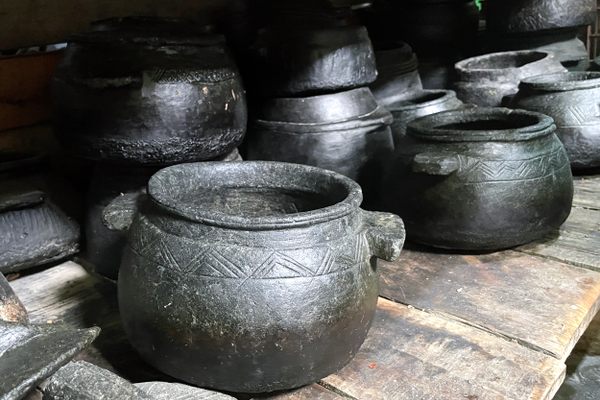5 of Our Favorite Podcast Episodes About Wildlife in Unexpected Places
Life finds a way, from the bats that haunt and hunt in a majestic library to a bird sanctuary in one of the most dangerous places in the world.
It’s to be expected that wildlife carves out special niches in the strange, evolving world we’ve made for them, but creatures big and small continue to surprise with their adaptability. We’ve visited this idea several times on The Atlas Obscura Podcast, so this week we took a look back at some of favorite stories in this specific, fascinating little genre, from the South American spiders that made a home in a Scandinavian museum, to the bats that play a special role in a historic Portuguese library.
Luomus Spiders
The Finnish Museum of Natural History in Helsinki has preserved specimens from all over the world, and one exotic species that they’re not quire sure how they acquired: venomous Chilean recluse spiders that reveal themselves whenever curators move things around.
Parrots of Green-Wood Cemetery
Green-Wood Cemetery in Brooklyn, New York, is full of historic graves, from that of stained-glass master Louis Comfort Tiffany to conductor Leonard Bernstein. Among the gray stones, however, it’s not uncommon to see splashes of color, from the Argentinian parrots that have made an unlikely home there.
Mafra Palace Library Bats
One of the finest libraries in Europe, at Mafra Palace in Portugal, has an unusual way to protect its thousands of historic volumes from pests—a colony of tiny bats that swoop through the stacks every night.
Cranes of the DMZ
The Demilitarized Zone (DMZ) between North and South Korea is a no-man’s land, and some of the most contested real estate in the world. As a result, it has become an accidental sanctuary for one of the world’s most endangered crane species.
Monkey Island
The tiny island of Cayo Santiago, about half a mile from the main island of Puerto Rico, is home to a troop of rhesus macaques, brought over nearly 100 years ago from India—and the subject of a decades-long experiment in primate social dynamics.






















































Follow us on Twitter to get the latest on the world's hidden wonders.
Like us on Facebook to get the latest on the world's hidden wonders.
Follow us on Twitter Like us on Facebook